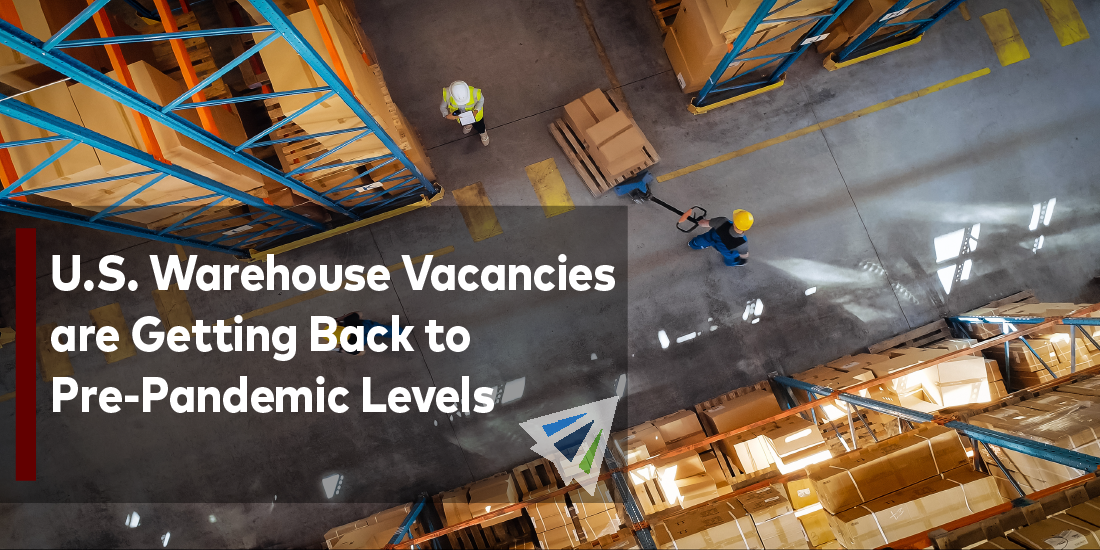As vacancies steadily rise to levels last seen prior to the epidemic in 2019, the US industrial real estate market is witnessing a noticeable shift. Although this may at first appear to be a cause for alarm, market professionals hasten to point out that the market is still strong and in good condition. Vacancy rates have only recently reached 4.1% in the second quarter of the year, marking the first time they have done so since mid-2021, despite the supply-demand equation tilting in favor of supply.
In the second quarter of 2018, the net absorption for the US industrial real estate sector totaled 44.9 million square feet, according to a new analysis from renowned commercial real estate firm Cushman & Wakefield. In comparison, the first quarter’s numbers revealed a more significant 71.4 million square feet absorbed and a 3.5% vacancy rate.
Expected Increases in Vacancy Rate
The near future is predicted to see continuous increases in the vacancy rate, which is projected to reach 5.5% by the year 2024. This increase is partly related to the completion of new initiatives intended to satisfy the unmet needs of the e-commerce industry. This viewpoint was shared by Ben Harris, a senior managing director at Cushman & Wakefield. He emphasized that the present market state continues to be “healthy,” especially when contrasted to the historical 15-year average vacancy rate of 6.6%.
Harris contends that a healthy industrial real estate market requires a certain amount of vacancy, and while the 2% or 3% vacancy rates seen in some places may seem low, it is crucial to maintain a balance. Harris contends that the market would remain strong and resilient, providing a better environment for growth, even if the vacancy rate were to linger beyond the 6% or 7% threshold.
The current warehouse vacancy rates are very similar to the quarterly averages seen between 2015 and 2019, which totaled about 138 million square feet. These figures show a market that is in good form, according to Hamid Moghadam, CEO of logistics service provider Prologis, even though they are up from the previous two years.
According to Moghadam, market dynamics in 2019 are similar to those of the years prior to COVID, indicating a return to some semblance of normalcy in terms of demand, supply, and rental growth. While excluding the turbulent years of 2020 to 2022 from the equation, Moghadam expresses his happiness with the market’s resemblance to the 2019 situation during Prologis’ Q2 results call.
Chris Caton, the managing director of the company, highlighted that Prologis has placed a strong emphasis on the Southern California region. Despite the strong 97% lease rate of Prologis’ California portfolio, rising rent costs, declining West Coast port volume, and labor negotiation uncertainty have caused both purchasers and lessees to rethink their entry into this market.
Trends in Savannah, Dallas, and Houston
In other areas, particularly in the Southern markets, where more than 60% of the second-quarter absorption is concentrated, a different story begins to emerge. Savannah, Dallas, and Houston, three important participants, have each had a phenomenal net absorption of more than 3 million square feet. This positive trend, according to Cushman & Wakefield, can be attributed to a number of elements, including affordable land, a supportive business climate, close access to southeast US ports, and a growing population in the area.
Despite predictions of rising rents, Cushman & Wakefield’s Harris stated that the rate of increase is expected to be low. The goal of developers and landlords to maintain a managed and advantageous renting market is projected to keep construction activity relatively low. In the end, despite the fact that changes and volatility are a part of the industrial real estate landscape, the general outlook is one of cautious optimism for a market that, despite its ongoing evolution, nonetheless radiates power and energy.
